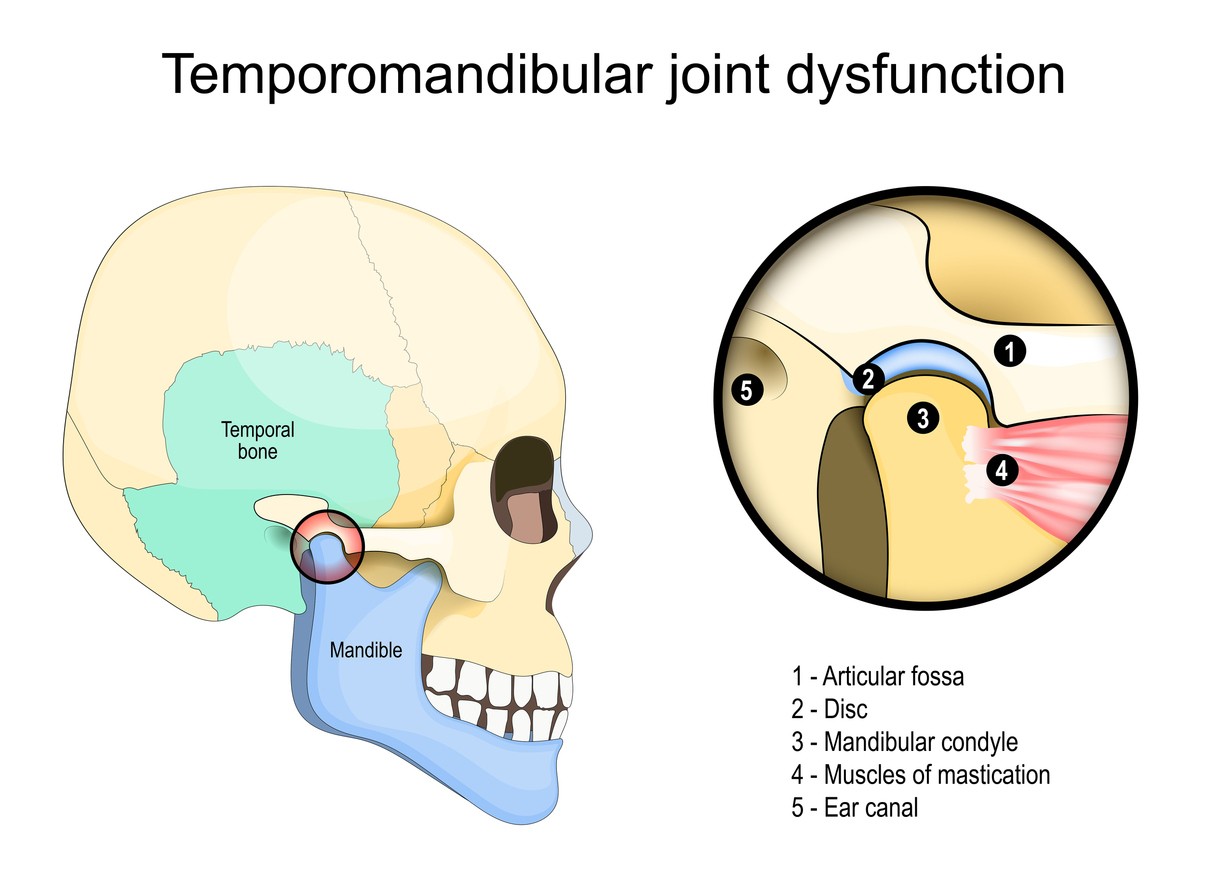Chiropractic Care for TMJ: A Natural Approach to Jaw Pain Relief
If you’ve ever experienced jaw pain, difficulty chewing, or a clicking sound when you open your mouth, you may be dealing with temporomandibular joint (TMJ) disorder. This common condition can significantly impact your quality of life, making simple activities like eating and talking uncomfortable or even painful. While there are various treatment options available, many people are turning to chiropractic care as a natural and effective way to manage TMJ symptoms. In this post, we’ll explore what TMJ is, its symptoms and causes, and how chiropractic techniques can help provide relief.
Understanding TMJ Disorder

The temporomandibular joint is the sliding hinge that connects your jawbone to your skull. It’s a complex joint that allows for a wide range of motion, enabling you to speak, chew, and yawn. When this joint isn’t functioning properly, it can lead to a condition known as temporomandibular joint disorder or TMJ disorder.
Following are common symptoms of TMJ:
- Jaw Pain: Pain or tenderness in the jaw, which can be persistent or occur during chewing or speaking.
- Ear Pain: Discomfort or pain in or around the ears, which may be mistaken for an ear infection.
- Headaches: Frequent headaches or migraines, often feeling like tension headaches.
- Facial Pain: Pain or aching in the face, sometimes extending to the neck and shoulders.
- Clicking or Popping Sounds: Clicking, popping, or grating sounds when opening or closing the mouth.
- Difficulty Chewing: Difficulty or discomfort while chewing or a sudden uncomfortable bite, as if the upper and lower teeth are not fitting together properly.
- Locking of the Jaw: The jaw may lock in an open or closed position, making it difficult to open or close the mouth.
- Swelling: Swelling on the side of the face, often associated with pain.
- Limited Range of Motion: Reduced ability to open the mouth wide.
These symptoms can range from mild to severe and may be temporary or long-lasting. In some cases, TMJ disorder can significantly impact a person’s ability to eat, speak, or even sleep comfortably.
8 Causes of TMJ Disorder

TMJ disorder can arise from a variety of factors, often involving a combination of physical and psychological elements. Some common causes include:
- Jaw misalignment: When the upper and lower teeth don’t fit together properly (malocclusion), it can put stress on the TMJ.
- Teeth grinding (bruxism): Often occurring during sleep, this habit can overwork the jaw muscles and stress the joint.
- Jaw Injury: A blow to the jaw or whiplash injury can damage the joint or surrounding tissues.
- Arthritis: Conditions like osteoarthritis or rheumatoid arthritis can affect the TMJ.
- Stress: Tension from stress can lead to clenching of the jaw and tightening of facial muscles.
- Poor posture: Slouching or forward head posture can affect the alignment of the spine and jaw.
- Repetitive strain: Habits like excessive gum chewing or nail-biting can overwork the jaw joint.
- Connective tissue disorders: Certain conditions affecting connective tissue can impact TMJ function.
Understanding the root cause of TMJ disorder is the key to effective treatment. This is where chiropractic care comes in, offering a holistic approach that addresses not just the symptoms but the underlying issues contributing to TMJ dysfunction.
Chiropractic Approach to TMJ Treatment

Chiropractors are specialists in musculoskeletal health, focusing on the relationship between the spine, nervous system, and overall body function. When it comes to TMJ disorder, your chiropractor in Bend will take a comprehensive approach, looking at how the jaw joint interacts with the neck, spine, and surrounding muscles. Here are some key chiropractic techniques used to treat TMJ:
1. Spinal Adjustments
The alignment of the spine, particularly in the neck region, can have a significant impact on TMJ function. Misalignments in the upper spine (neck) can affect nerve function and muscle tension in the jaw area. Your chiropractor uses precise, gentle adjustments to correct these spinal misalignments, which can help alleviate pressure on the TMJ and improve overall joint function.
2. TMJ Adjustments
Direct chiropractic adjustments to the temporomandibular joint itself can help restore proper alignment and movement. These adjustments are typically very gentle and may involve your chiropractor applying light pressure to the jaw or using small instruments to guide the joint into the correct position.
3. Myofascial Release
The fascia, a connective tissue that surrounds muscles, can become tight and restrictive, contributing to TMJ pain. Your Bend chiropractor may use myofascial release techniques to gently stretch and manipulate the fascia, reducing tension and improving flexibility in the jaw and surrounding areas.
4. Shockwave Therapy
Shockwave therapy can help alleviate the pain and discomfort associated with temporomandibular joint (TMJ) disorders by promoting increased blood flow and tissue regeneration in the affected area. Shockwave therapy works for TMJ by delivering acoustic waves to the jaw area, which stimulates the healing process and reduces muscle tension and pain.
5. Trigger Point Therapy
Trigger points are tight knots in muscles that can refer pain to other areas. In TMJ cases, trigger points in the jaw, neck, and shoulder muscles can contribute to pain and dysfunction. Your chiropractor in Bend can identify and treat these trigger points, helping to relieve pain and improve muscle function.
6. Postural Correction
Poor posture, especially forward head posture, can contribute to TMJ issues by altering the natural alignment of the spine and jaw. Your Bend chiropractor can assess your posture and provide exercises and adjustments to help correct postural imbalances, which in turn can alleviate stress on the TMJ.
7. Soft Tissue Therapy
Techniques such as massage therapy, stretching, and gentle mobilization of the muscles around the jaw and neck can help reduce tension and improve flexibility. This can be particularly beneficial for patients who clench or grind their teeth.
8. Exercise and Stretching Recommendations
Your Bend chiropractor often prescribe specific exercises and stretches to strengthen and improve the flexibility of the jaw muscles. These may include gentle jaw exercises, neck stretches, and relaxation techniques to help manage stress-related jaw tension.
9. Lifestyle and Ergonomic Advice
In addition to hands-on treatments, chiropractors provide guidance on lifestyle factors that may be contributing to TMJ issues. This might include advice on proper sleeping positions, ergonomic adjustments for work environments, and tips for reducing jaw strain in daily activities.
Benefits of Chiropractic Care for TMJ
Chiropractic treatment for TMJ offers several advantages:
- Non-invasive approach: Chiropractic care provides a conservative treatment option that doesn’t involve surgery or medication.
- Addresses root causes: By focusing on overall musculoskeletal health, chiropractic care aims to correct underlying issues contributing to TMJ dysfunction.
- Holistic perspective: Your chiropractor consider the entire body’s alignment and function, not just the jaw itself.
- Customized treatment plans: Each patient receives a tailored approach based on their specific symptoms and needs.
- Complementary care: Chiropractic treatment can be used alongside other TMJ therapies for a comprehensive approach.
Many patients report significant improvements in TMJ symptoms following chiropractic care, including reduced pain, improved jaw mobility, and decreased clicking or popping sounds. Additionally, by addressing related issues like neck pain or headaches, chiropractic care can contribute to overall improved quality of life.
Reach Out to Total Body Chiropractic to Treat Your TMJ
TMJ disorder can be a challenging and painful condition, but chiropractic care offers a natural, non-invasive approach to treatment. By addressing not just the jaw joint itself but also related musculoskeletal factors, chiropractors can help patients find relief from TMJ symptoms and improve overall jaw function.
If you’re struggling with TMJ pain or dysfunction, make an appointment with one of our chiropractors in Bend who are experienced in treating this painful condition. We can assess your individual case, develop a tailored treatment plan, and work with you to achieve long-term TMJ relief. Remember, early intervention is key in managing TMJ disorders, so don’t hesitate to seek help if you’re experiencing symptoms.

